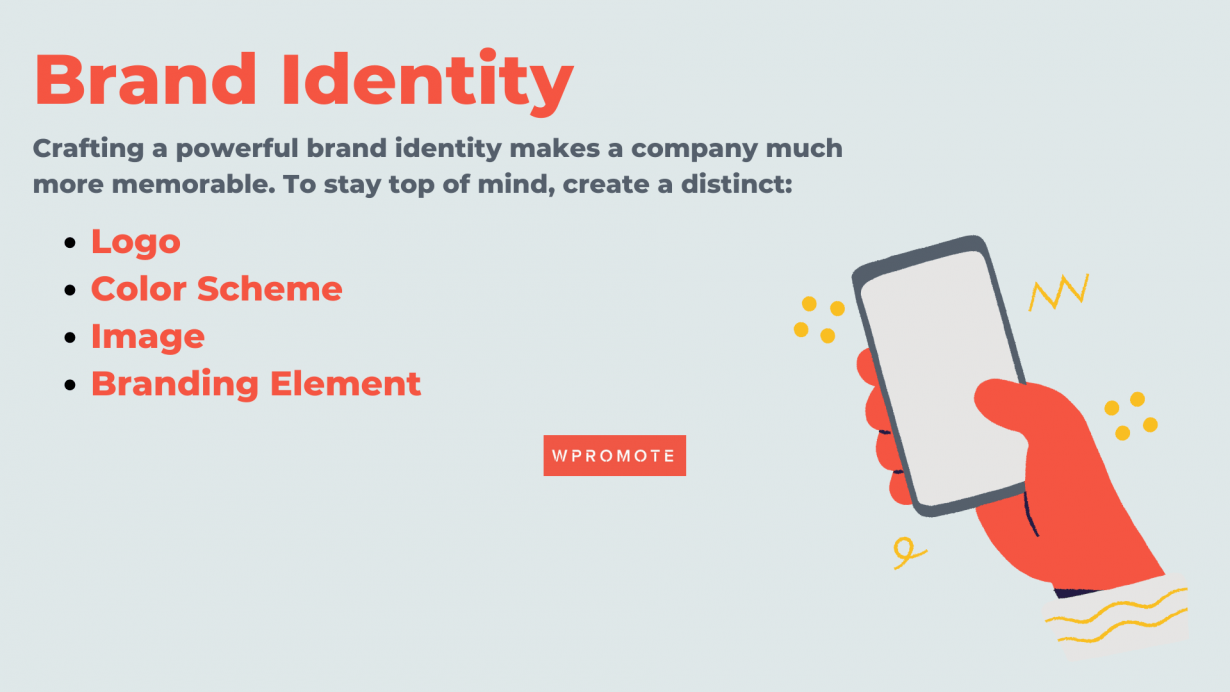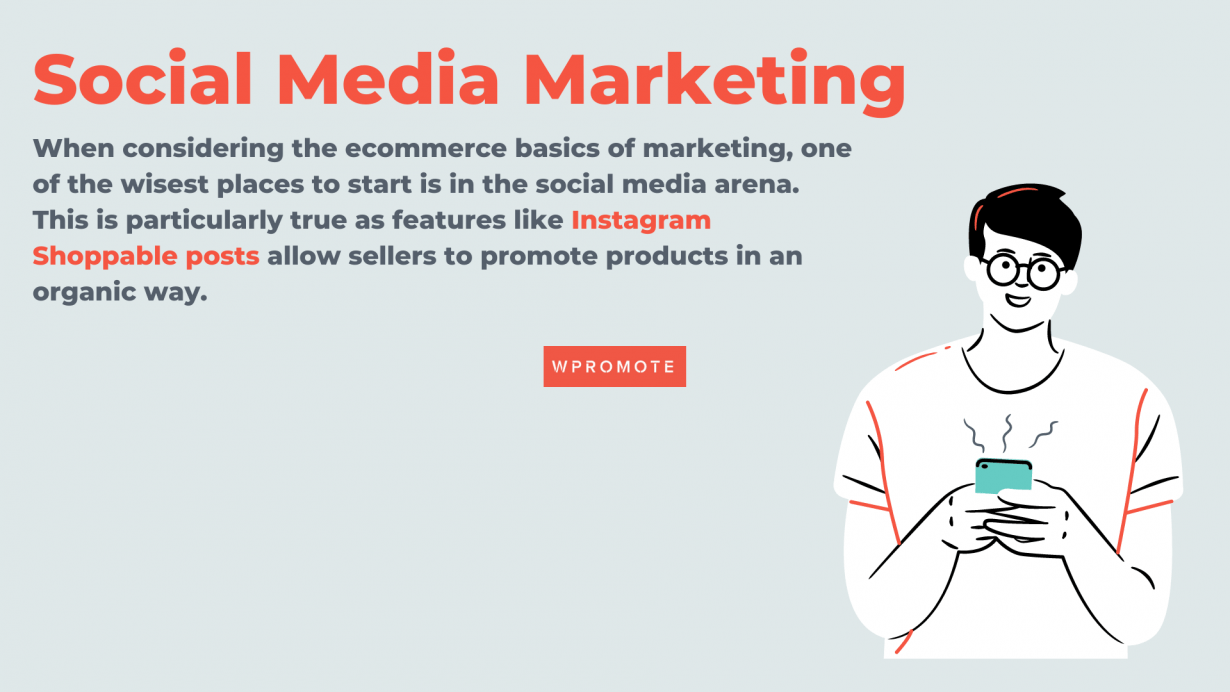Practically every aspect of the modern world has been altered by the advent of the internet. This assertion is particularly true for retailers.
For those who sell their merchandise online, there has been an unmistakable shift in the past few years as ecommerce sales in the United States have increased exponentially, generating more than $365 billion in 2019 alone.
However, with that massive leap in opportunity for online merchants comes a specific set of struggles and inherent challenges.
When it comes to laying the groundwork for a breakthrough brand, even implementing ecommerce basics can be a time-consuming process that requires constant considerations, creativity, and tenacity.
For retailers to successfully transform foundational elements into sales is dependent on a variety of factors, including how the company is branded, the digital marketing strategies employed, how well logistics chains are implemented, and other critical ecommerce basics.
Taking things back to the beginning, today, we will be discussing nine ecommerce basics that merchants must master if they are to build a successful online retail business.
Through these elements, strong attention to detail, and a firm will to succeed, merchants can craft a brand that can one day compete with the big boys in the ecommerce industry.
The first of the ecommerce basics for sellers to get down pat is a robust brand personality.
A Strong Brand Identity
When a consumer hits an ecommerce landing page, they should immediately gain a sense of the company and what it offers, thereby letting them know they are in the right place.
A brand is a business’s identity, the image they aim to portray to consumers. A brand identity is one of a company’s most valuable assets as it is, in part, what sets an organization apart from its competitors. As Investopedia defines a brand identity, it is:
“The visible elements of a brand, such as color, design, and logo, that identify and distinguish the brand in consumers’ minds.”
However, while a brand identity does encompass these elements, the end result is so much more than its individual components. In totality, a brand identity communicates the business’s personality and values, projects a sense of quality and trustworthiness, builds trust and loyalty, positively influences purchasing decisions and much more.

Some of the main benefits of a distinct brand identity include:
- Ability to Command a Premium Price: A robust brand identity enables businesses to charge a premium price for their products. Why will consumers pay significantly more for a Lexus than they will for a Toyota when they are basically the same product, minus a few bells and whistles? The answer is because of the image Lexus has cultivated. When it comes to ecommerce retailers, the same principle applies as creating a strong brand identity creates the perception that consumers will be provided with a certain level of quality, thereby attracting customers who are willing to spend a bit more.
- The Perception of Quality: As they say, “You get what you pay for.” Given that Lexus charges so much more for their vehicles than Toyota does, that means it is a superior product, right? Not exactly. The fact of the matter is that while Lexus is a good brand, people are mainly paying for the name. The same can be said for a variety of clothing products, electronic items, jewelry and other types of merchandise. When it comes to implementing ecommerce basics, brand identity enables merchants to create an air of credibility and quality, despite the actual difference in value between a seller and their competition. Nonetheless, a great brand identity creates a world of difference in the mind of the consumer.
- Recognition and Loyalty: Finally, crafting a powerful brand identity as one of the ecommerce basics makes a company much more memorable. By creating a distinct logo, color scheme, images and other branding elements, businesses are far more likely to stick in the mind of potential customers. If buyers are happy with their experience and the products they receive, that sharp image is likely to aid in cultivating loyalty toward the brand. Moreover, when a consumer finds themselves devoted to a business, they are more likely to recommend that company to their friends and family.
A User-Friendly Design
Creating a site with a well-designed user experience is one of the most critical ecommerce basics.
When it comes to web design, simplicity is the name of the game. In fact, 76% of consumers want websites to make it easy for them to find what they are after.
However, it should be noted that merchants need not sacrifice sophistication and elegance to achieve this goal. In reality, today’s minimalist, simplistic approach to web design often results in a refined appearance.
Without getting too hung up on aesthetics, merchants’ main objective is to build a website that enables shoppers to find what they want quickly and simply.
The fact of the matter is that retailers have only a couple of minutes, sometimes seconds, to make a sale. By clearing the path to purchase through improving ecommerce UX interfaces, retailers are more likely to earn conversions.
Truthfully, one of the main reasons why people love shopping on Amazon (minus the enormous selection and fast shipping) is that the site is super simple to navigate and utilize. Consumers have a variety of tools at their disposal for finding what they want in just a few clicks.
While most merchants don’t have the bankroll to build something as polished as Amazon’s platform, obtaining a refined site experience is wholly achievable with the tools provided by platforms like Shopify, Magento and others.
A Mobile-Friendly Website
This tip isn’t just one of the most vital ecommerce basics. It is one of the most foundational elements for any successful online business.
This assertion becomes quite apparent when one considers that mobile shopping now accounts for over 50 percent of online transactions.
Therefore, in 2020, mobile optimization is important for online retailers to compete with those who already tout mobile-friendly destinations.
Without a friendly, mobile-responsive site, it will be incredibly difficult for merchants to generate the sales required to grow their brand. This is true no matter if a business touts five product pages or five million.
By creating a mobile-friendly website, retailers are addressing one of the most basic ecommerce prerequisites for success.
High-Quality Product Images
Building better product pages is critical for generating online sales. Since online shoppers cannot pick up an item and feel it with their hands, it is incumbent upon sellers to feature high-quality images that enable consumers to get an intimate look at an object from multiple angles.
Additionally, when it comes to generating stunning images that sell, retailers should take the time to highlight important or unique features, as these things are likely to be selling points for a product.
When including item images on product pages, sellers should use photos of products from the front, back, sides and (if applicable) inside.
Moreover, some brands (such as those who sell outdoor gear) might find it more advantageous to depict products in real-world settings through “lifestyle” photos. These types of images can better inform consumers on an item’s design or use and enable people to imagine themselves using the product, thereby triggering an emotional connection.
Meanwhile, other products (like more mechanical ones) should be juxtaposed against a white background so that consumers can get a better look at the features and details of the item.
However, the best way to find out which images work best for specific items and brands is to A/B test product photos to see which generate the best results.
Customer Reviews
When speaking to ecommerce basics, few things are more elemental than product ratings and reviews.
Plainly put, the vast majority of consumers read product reviews before purchasing an item. Therefore, those who leave (positive) reviews not only pay for an item but end up recommending it to others. As a result, the words that customers write about a product can have far more of an impact than their single purchase.
That said, some site owners are hesitant to enable the review feature of their site as they fear that some customers will leave negative reviews, thereby tarnishing their product pages.
However, products that have nothing but glowing reviews often seem suspicious or inauthentic to consumers. This kind of dynamic throws up red flags for shoppers, thereby resulting in fewer conversions.
Moreover, learning to handle negative reviews is a valuable skill that merchants must master if they plan on succeeding in ecommerce.
Additionally, reviews are an ideal source of user-generated content, which can help to bolster a store’s performance in the SERPs.
Depending on the ecommerce platform that a seller uses, there are various plugins, extensions, and apps that enable product ratings and reviews so that buyers can sing a product’s praises.
However, when a site enables review functionality on its website, it is highly advisable to have a plan in place to get more product reviews as no assessments are just as suspect as all positive ones.
A Streamlined Checkout Process
One of the most commonly cited reasons for cart abandonment is “too long/complicated checkout process.” Therefore, one of the most critical of the ecommerce basics is to tout an easy, simple checkout process. To achieve this aim, there are a handful of elements that merchants must possess.
Firstly, guest checkout is essential as forced account creation is the reason for 31 percent of abandoned carts. The fact of the matter is that consumers don’t want to create an account with every site from which they purchase. As a result, forced account creation slows things down and results in lost purchases.
Secondly, in an attempt to deter abandonment, sites should aim to keep their checkout process to one or two steps. A progress bar to let customers know how close they are to finished can also be a good way to keep them in the process.
However, no matter how many pages shoppers must go through (which should be as few as possible), it is critical to reduce the number of form fields that consumers must complete.
By only including the fields that are necessary to complete the order, customers are more likely to reach the “Thank You” page of the process.
To help speed things along, retailers should also consider utilizing autofill fields to populate countries, cities, states, and the like so that shoppers can complete their orders even quicker.
While autofill fields are not one of the ecommerce basics, they can surely help to increase conversions.
Superior Customer Service
When it comes to ecommerce basics that will build a following, elevate customer satisfaction and ensure that a brand is valuable to its shoppers, excellent customer service is near the top of the list.
Given that ecommerce merchants are denied face-to-face interactions with their audience, ensuring that world-class customer experience is provided through all phone calls, live chats, emails, etc. is critical to cultivating loyalty and positive sentiment online.
A Solid Order Fulfillment Method
Naturally, order fulfillment is intimately tied with customer satisfaction. Thanks to forces such as Amazon, consumers are increasingly unwilling to wait weeks to receive a product ordered online.
Therefore, unless sellers are dealing in digital products, a robust fulfillment strategy is one of the more vital ecommerce basics.
However, when just getting started, order fulfillment can be one of the more challenging things to get right. This is particularly true for sellers who compete with massive entities in their niche, let alone the Amazons and Walmarts of the world.
While it is extremely likely that many merchants won’t be able to provide same-day or next-day shipping like the aforementioned retail behemoths, the most expedient shipping possible is something that merchants should strive to achieve as it will keep customers happy and coming back for more.
Therefore, investing in a solid order fulfillment strategy is an ecommerce basic that can be built upon to help a business scale over time.
A Potent Marketing Plan
Just like brick-and-mortar stores, ecommerce websites heavily rely on practical and creative marketing strategies. After all, if shoppers don’t know that a store exists, they can’t peruse its wares.
Therefore, marketing is the lifeblood of ecommerce businesses. If a brand has an excellent website, outstanding products, superior customer service and a fantastic fulfillment strategy, but is wholly deficient in the marketing area, the chances of success are still relatively slim.
However, when considering the ecommerce basics of marketing, where should sellers begin? After all, there are a variety of marketing modalities that can be leveraged, including:
- SEO
- Social media
- PPC advertising
- Email marketing
- Content marketing
- Affiliate marketing
One of the wisest places to start is likely in the social media arena, as platforms like Facebook, Instagram, TikTok and others have proven to be influential destinations for cultivating awareness and generating sales. This is particularly true as features like Instagram Shoppable posts allow sellers to promote products in an organic way.

Moreover, social media portals are an excellent source of user-generated content (UGC) such as reviews and images. Since UGC has become such a vital component to the ecommerce industry as a whole, social media is a natural starting point for many merchants.
That said, it is still critical for retailers to invest in a well-rounded marketing strategy that helps to generate traffic, build visibility in the SERPs, educate customers and drive sales.
While all of these ecommerce basics are essential elements to success, it is also worth noting that retailers should take the time to test and iterate with different tactics for these nine basics, as well as other essential ecommerce components.
The fact is that every business is unique in its own way and A/B testing is necessary to establish what works best for an individual brand.






Responses